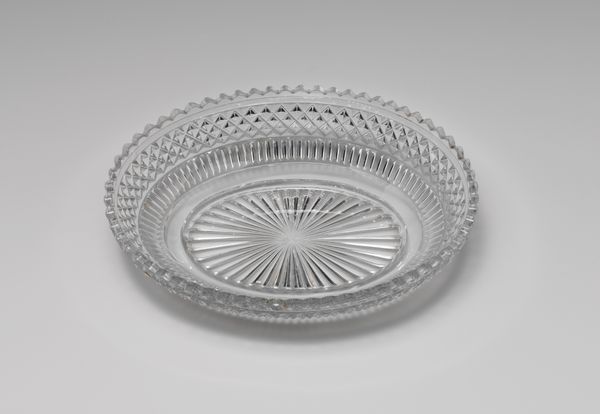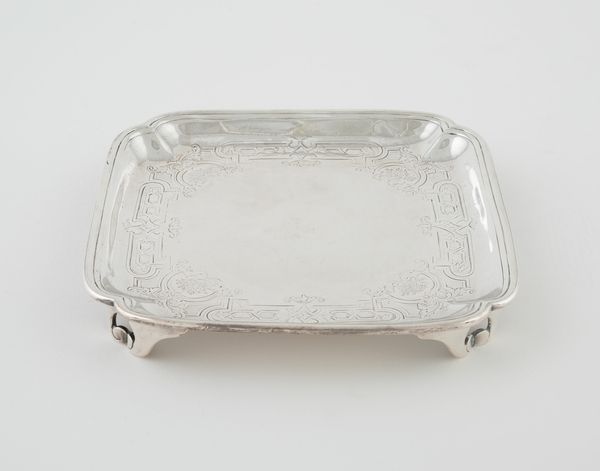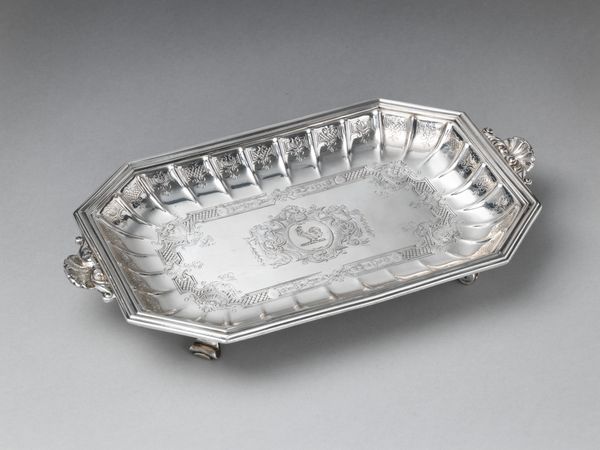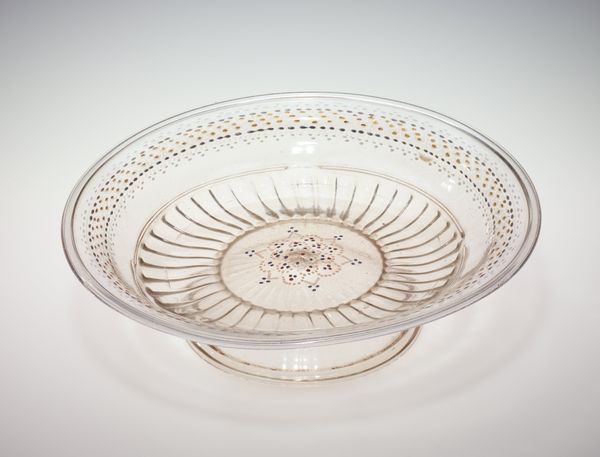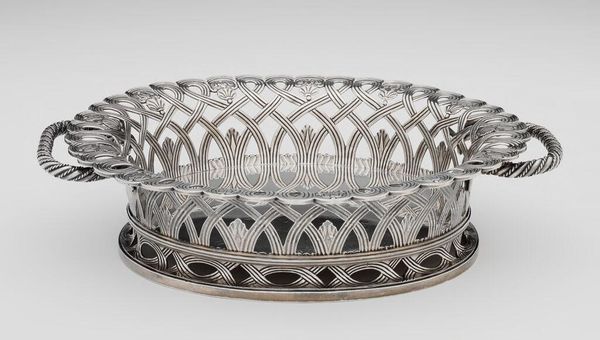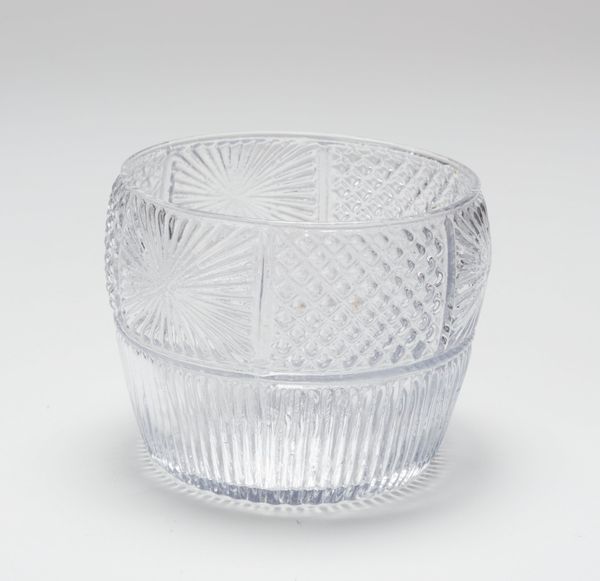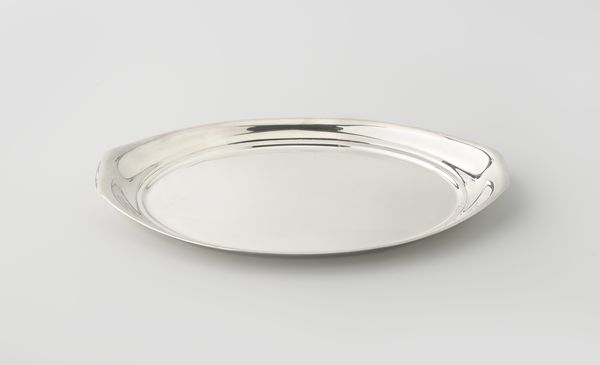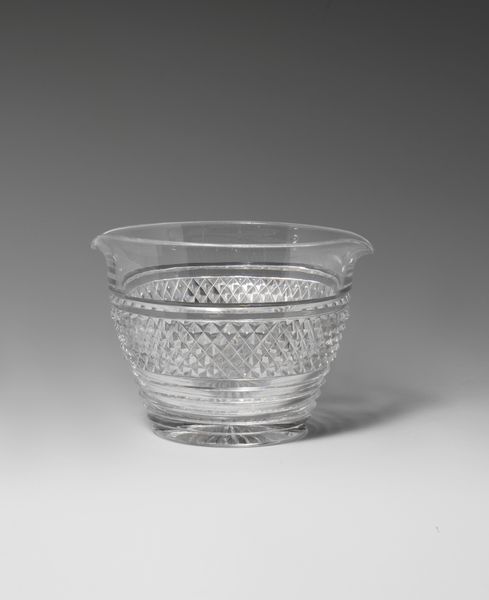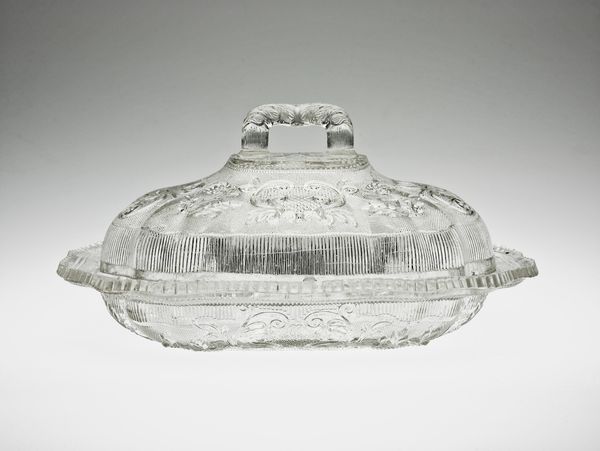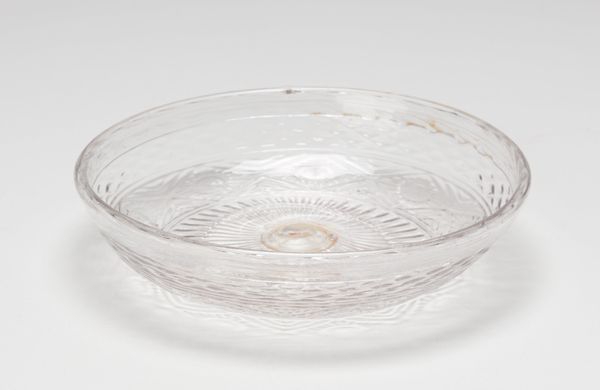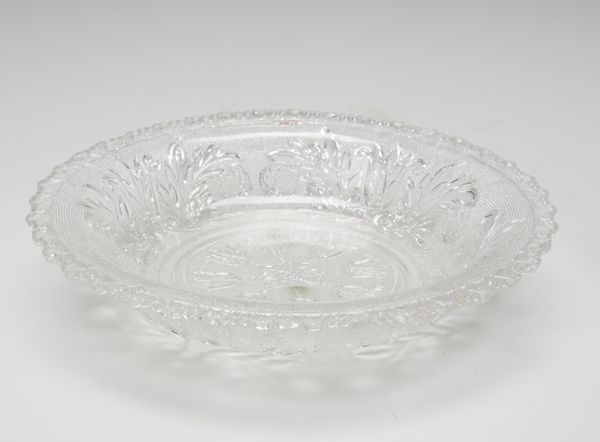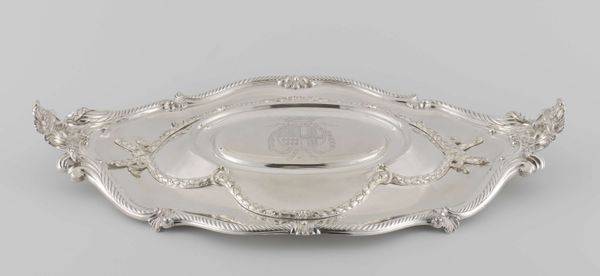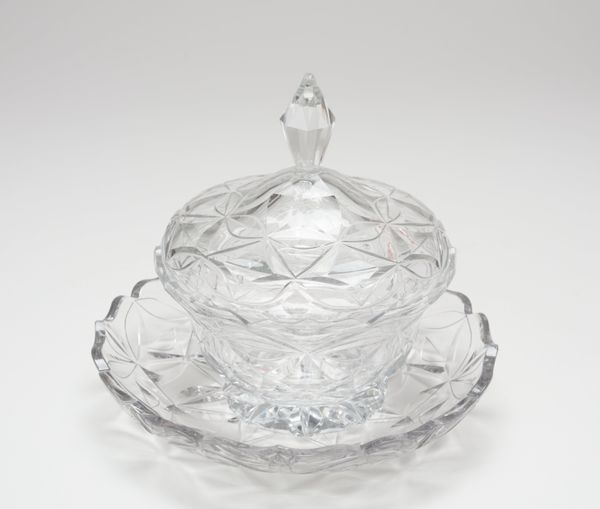
glass
#
glass
#
united-states
#
decorative-art
Dimensions: 9 1/4 x 6 15/16 in. (23.5 x 17.6 cm)
Copyright: Public Domain
Curator: We’re looking at a “Dish” by the New England Glass Company, crafted somewhere between 1813 and 1825. It resides at the Metropolitan Museum of Art, a testament to early American glassmaking. Editor: My first thought is that this isn’t just a dish, but a whole geometry lesson in crystal! Look at those patterns. There is something starkly beautiful in its relentless angularity. Curator: Absolutely, and let's consider the means of production. Pressed glass technology, even in its nascent stage then, democratized luxury. Instead of individually blown glass, they pressed it en masse. The labor is different, the output vast. Editor: A piece for the people then! It speaks volumes about societal shifts, making elegance accessible. Now, what was its actual function? Was it for cakes, candies, sorrows? Imagine the stories it holds! Curator: Knowing the period, I wonder about trade routes, silica sources, even the social status of those early factory workers. Each facet echoes a ripple in economic history. Editor: Though the pattern repeats and speaks to the mechanized nature, each tiny bubble in the glass looks like it tells a story—a whisper of the imperfections that give things character. It hints that humans were still integral in the production, even if it was an assisted process. Curator: Precisely! I find myself drawn to how it embodies both opulence and restraint. The crystal's clarity sings, but the form's functional, not flamboyant. Early industrial ambition made manifest! Editor: Right, it seems they want you to have fancy glass and eat from it too, I love art pieces like that. Thank you for taking us through a less opaque understanding of early decorative art. Curator: And thank you, it’s a small thing in appearance but massive in impact!
Comments
No comments
Be the first to comment and join the conversation on the ultimate creative platform.
